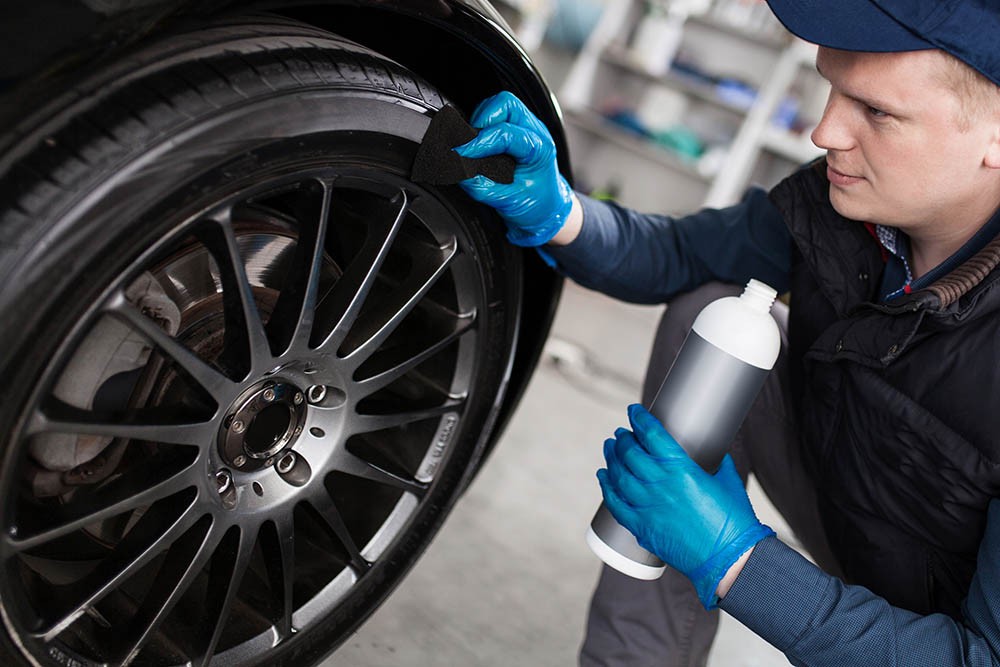Rubber Sole: Add The 'Wow' Factor To Neglected Tires

There’s an easy way to add some pizzazz to your vehicle–apply some tire dressing to the sidewalls.
Tire dressings come in a variety of formulations to provide the effect you want to achieve. In the last several years, the introduction of wet-look tire products paralleled the popularity of vehicle wheels and all-terrain treads.
Tire dressing helps set off the kind of wheels now found on full-sized SUVs, compact SUVs with low-profile tires and off-road trucks. No matter which type of wheel you have––aluminum, anodized or powder-coated and painted–dressing your vehicle tires helps bring out the color and detail of your vehicle rims–like how a nice pair of shoes highlights a tuxedo.
Interested in a glossy finish? Choose a wet product option.
Want a more subtle look? Select a matte finish for a velvety appearance.
Tire dressings are not intended to protect tires, just make them look good.
“Tire dressing repels water, but it doesn’t actually add to tire life,” says Ron Fausnight, former research and development manager for ITW Global Brands, makers of Black Magic products. “They’re really used for appearance.”
Tire dressings have changed considerably since they first entered the market in the 1970s.
Water-based silicone tire dressings were first introduced in the 1970s and provided a low-gloss sheen. Unfortunately, they need to be reapplied every few days.
Solvent-based tire sprays were introduced in the 1990s. These formulas give tires a glossy and wet look and last a week or so between applications.
Tire dressing gels adhere better to rubber than earlier formulas and last from a few weeks to a few months depending on driving conditions. They produce a high-gloss, wet-looking surface. Usually, the product includes an applicator sponge.
The latest innovation in tire dressing is the “wet wax” formula, which is estimated to last eight to 10 weeks. It is applied with a sponge, just like the gels, but gets drier to the touch than other formulas.
“People with classic cars and muscle cars typically use the older, water-based tire dressings. They tend to like the lower shine because it’s more authentic on, say, a classic 1970 GTO,” Fausnight says. “Meanwhile, many people with SUVs, jacked-up trucks and low riders want their tires to be really shiny.”
Here are some tire dressing tips, courtesy of ITW Global Brands:
- Apply to clean, dry tires. The tire dressing will adhere better, last longer and look better.
- For water-based silicone emulsion sprays, spritz the product onto the tires and wipe it evenly across the surface with a clean rag. These products are less potent, and may require re-application every couple of days, depending on the weather.
- Solvent-based sprays last longer—generally a week or more—and produce a slicker, shinier surface.
- Gel formulas applied with a sponge are more precise—no overspray onto the paint, wheels or driveway.
- Let dry. Let the liquid or gel formula set for at least an hour, and overnight is probably best. If you don’t let it dry long enough, or if you apply it too heavily, it may “sling” onto the rocker panels at the outer edge of your car’s underbody when you drive.
- Wax-based tire dressings produce the longest-lasting wet-look shine (eight to 10 weeks) and also dry faster than liquids or gels.